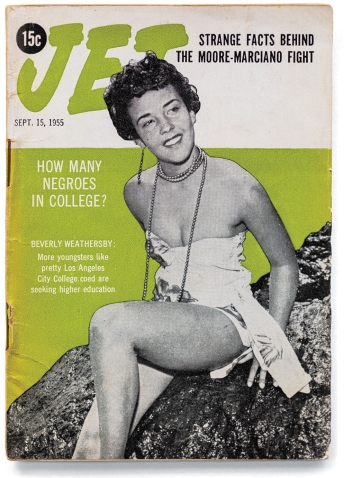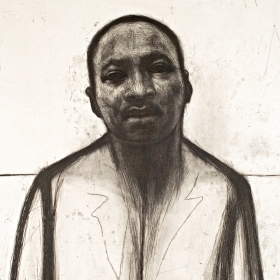One night last summer, Brenna Greer, associate professor of history, made a heart-stopping discovery on the internet.
“My research is focused on Black magazines of the mid-20th century, and those are actually hard to come by,” she says. “I scour the internet for them regularly. And on one of those late-night missions, I came across a listing on eBay of a particular Jet magazine that I have coveted for years: the Sept. 15, 1955, issue that publicized the lynching of Emmett Till.”
That particular issue is significant because it published “the terrible photographs of Emmett Till in death,” says Greer. Till, a 14-year-old, was abducted, tortured, and lynched in Mississippi in 1955. “When those photographs appeared in Jet, it was galvanizing for a lot of young African Americans and a lot of civil rights activists.” The only hard copy of that issue she knows of resides at the National Museum of African American History and Culture in Washington, D.C.
“There was a spike in lynching after World War II,” Greer says. “There was even a lynching in Mississippi in May that Jet covered—and it had an open casket.” But that story didn’t have the electrifying effect of the Till images. Greer thinks that’s because it showed a man, not a young boy. “My father had talked about [the Till issue],” Greer says. “He was a young boy at that time. He talked about how it just scared him to death, you know, because he was a boy, and Emmett Till was a boy.”
Greer contacted the eBay lister to see if he’d be willing to sell that single issue, and found that he had most of the issues relating to the Emmett Till case. Greer contacted Ruth R. Rogers, the curator of Special Collections at Clapp Library. “I said, ‘You know, this classifies as what I have been trying to convince others are rare books.’ And to her credit, Ruth absolutely agreed.”
Rogers contacted the seller and negotiated the purchase of the Till-related magazines. They arrived on campus in August.
Rogers was surprised to see that Jet’s trim size was so small. Greer says that underscores the importance of having a material object, rather than just digital pages, to study. It provides a visceral sense of what it might have been like to have Jet in your hands, turn the pages, and encounter the shocking photos of Till.
“When you realize that people could hold onto that magazine, stick it in their back pocket, hand it around, particularly in relationship to this one event, you become aware of how the lynching of Emmett Till became so publicized among African Americans,” Greer says.
In 1955, Jet’s weekly circulation was about 425,000. The Sept. 15 issue sold out—the only edition besides the 1945 debut issue of the Chicago-based national publication to do so. “They did a second run,” says Greer.
And therein lies a mystery. When the seller looked at the magazine again, he discovered that his copy didn’t have the Till photos. “It actually has a different photo essay,” says Greer.
“I was disappointed not to have the magazine that I’d been coveting for a decade. But this is a piece of information that I’m not aware that anyone else has. And now I’m curious: Which came first? The one with the graphic photographs or the one without the photographs, and the decisions behind that?”








We ask that those who engage in Wellesley magazine's online community act with honesty, integrity, and respect. (Remember the honor code, alums?) We reserve the right to remove comments by impersonators or comments that are not civil and relevant to the subject at hand. By posting here, you are permitting Wellesley magazine to edit and republish your comment in all media. Please remember that all posts are public.